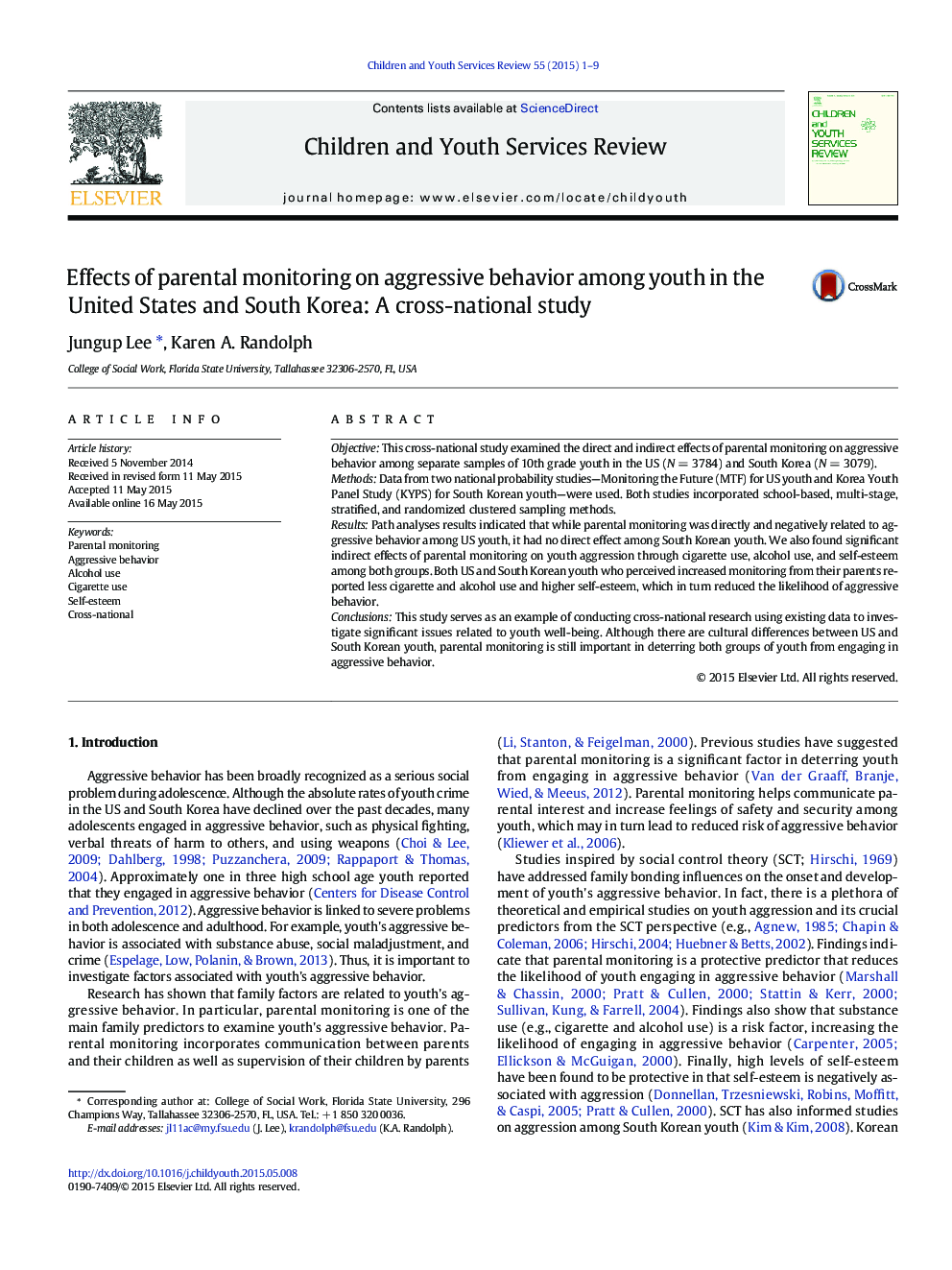| کد مقاله | کد نشریه | سال انتشار | مقاله انگلیسی | نسخه تمام متن |
|---|---|---|---|---|
| 345954 | 617778 | 2015 | 9 صفحه PDF | دانلود رایگان |
• Parental monitoring had a direct effect on aggressive behavior only for US youth.
• Females in both countries were less likely than males to commit aggressive behavior.
• Living area and father's education controlled significantly only for US youth
• The mediating roles of substance use and self-esteem were reported in both countries.
• Youth aggression was affected differently across different socio-cultural contexts.
ObjectiveThis cross-national study examined the direct and indirect effects of parental monitoring on aggressive behavior among separate samples of 10th grade youth in the US (N = 3784) and South Korea (N = 3079).MethodsData from two national probability studies—Monitoring the Future (MTF) for US youth and Korea Youth Panel Study (KYPS) for South Korean youth—were used. Both studies incorporated school-based, multi-stage, stratified, and randomized clustered sampling methods.ResultsPath analyses results indicated that while parental monitoring was directly and negatively related to aggressive behavior among US youth, it had no direct effect among South Korean youth. We also found significant indirect effects of parental monitoring on youth aggression through cigarette use, alcohol use, and self-esteem among both groups. Both US and South Korean youth who perceived increased monitoring from their parents reported less cigarette and alcohol use and higher self-esteem, which in turn reduced the likelihood of aggressive behavior.ConclusionsThis study serves as an example of conducting cross-national research using existing data to investigate significant issues related to youth well-being. Although there are cultural differences between US and South Korean youth, parental monitoring is still important in deterring both groups of youth from engaging in aggressive behavior.
Journal: Children and Youth Services Review - Volume 55, August 2015, Pages 1–9
